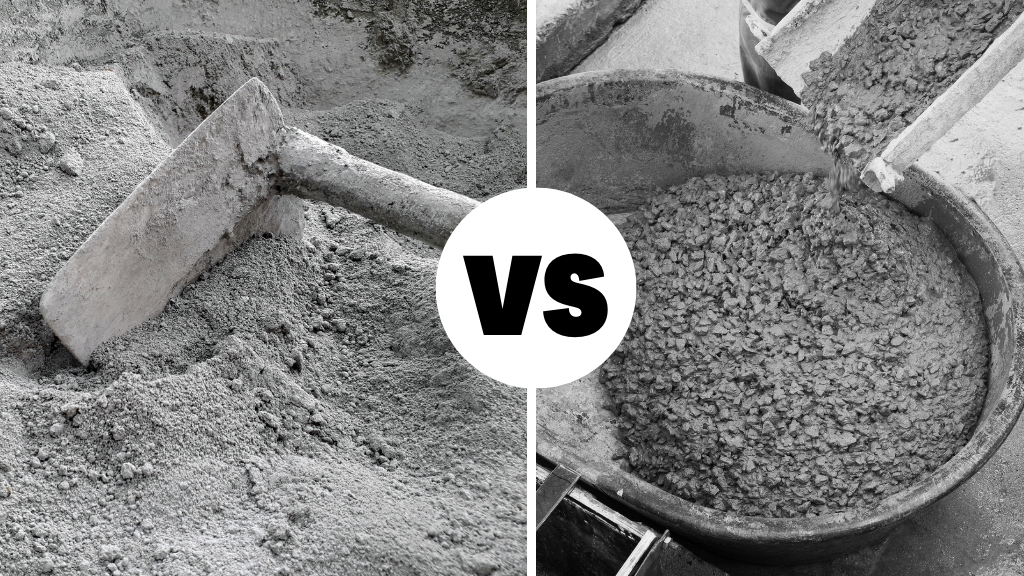Property Geek
We provide the actual and accurate information with unbiased user driven reviews to our viewers, to help them see the best and find the best!
View posts
Concrete and cement are often used interchangeably, but they are not the same. Understanding the difference between the two is essential for anyone involved in construction or home improvement projects.
Cement is an ingredient, while concrete is the final product used in building structures. Confusing the two can lead to miscommunication and errors in construction planning. In this article, we’ll explain the key differences between concrete and cement, their roles, and how they contribute to creating strong and durable structures.
Concrete is used across the globe for the construction of both residential and commercial buildings. The fact that makes it so appealing is the availability of the components as well as the strength and durability that it offers. Here are some facts about concrete:
Cement is a binder made from the mixture of aluminium, iron, calcium, silicon, and some other substances found in shells, limestone, clay, silica sand, and iron ore. These ingredients are mixed and heated to an extremely high temperature, which creates a hardened, rock-like substance. Later, it is ground into a very fine powder, cement. Lastly, it is mixed with water and aggregates that form concrete. Here are some facts about cement:
As we know, concrete comprises cement, gravel, sand, and water. Through a process known as hydration, the water and cement harden and fuse the aggregates into a rock-like mass. The hardening process can go on for years after being laid, meaning the older the concrete gets, the stronger it gets.
|
Particulars |
Cement |
Concrete |
|
Definition |
Cement is an adhesive or binding material. |
Concrete is a mixture of coarse and fine aggregates and binding material such as asphalt or cement |
|
Composition |
It is made from aluminium, iron, calcium, silicon, and some other substances found in shells, limestone, clay, silica sand, and iron ore. |
Concrete has sand, stone, cement, and water. While sand and stone provide strength, cement, asphalt, and lime bind the aggregates. Oftentimes, admixtures are also added to decrease the time of settlement. |
|
Working Mechanism |
When water is poured into cement, a hydration process takes place. It hardens the cement paste. Also, while the hydration process is taking place, two other reactions take place. The first one causes the cement to set and the second one hardens the cement and forms a gel, which is the main bonding material. | Concrete is a blend of coarse and fine aggregates. Fine aggregates fill the gaps of the coarse aggregates. Both aggregates need to be graded properly to achieve strength. Also, water and cement need to be mixed in proper ratios. |
|
Usage |
It is used as a binding agent in concrete. It can also be used as grout and to smoothen out surfaces. |
Concrete is used to provide compressive strength to building elements such as beams, slabs, footings, columns, and more. |
|
Types | Ordinary portland cement,Quick setting cementPortland pozzolana cement, Rapid hardening cement, High alumina cement, Low heat cement, Blast furnace cement, Sulphate resisting cement, Air entraining cement, Hydrophobic cement, Expansive cement. |
Regular Concrete, Stamped Concrete, High-strength Concrete, Vacuum Concrete, High-Performance Concrete, Glass Concrete, Self-consolidating Concretes, Polymer Concrete, Asphalt Concrete, Limecrete, Rapid Strength Concrete, Light-Transmitting Concrete, Roller-Compacted concrete |
Concrete is one of the most durable and longest-lasting materials, and therefore, it is used in larger projects such as bridges, commercials, residential buildings, sidewalks, and many such structures.
Cement, on the other hand, is used for smaller jobs such as repairing crumbling or cracked concrete and for specialized masonry.
We see concrete everywhere and often confuse it with just cement. Even if cement is the most indispensable part of concrete, there are other aggregates that give it strength and durability. In our guide where we mentioned the differences between concrete and cement, we looked at some major distinguishing features of both concrete and cement. The application of both these mixtures depends on the size of the job. Bigger projects such as foundations, columns, and beams require concrete and smaller jobs such as grouting and plastering need cement.